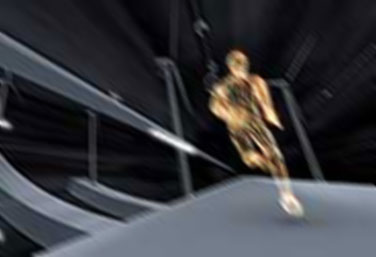3D animations from the Department of Media promote the "Innovative region number 1" in the new short film from MIWFT
"North Rhine-Westphalia (NRW) aims to become the innovative region number 1 in Germany by 2015." This is how NRW innovation minister Prof. Dr. Andreas Pinkwart has called to arms on the Web site of his Ministry for Innovation in North Rhine-Westphalia since June 2009. Only innovations can provide the "answers to the biggest questions facing modern society". In just under two-and-a-half minutes, the short film shows which expertise the "Innovative region number 1" can boast in its universities, research institutions and industries www.innovation.nrw.de.
The professional 3D animations featured in the short film were designed and constructed by students of the Faculty of Media under the watchful eye of Prof. Dr. Karin Welkert-Schmitt. The animations visualise "Science in motion": Two virtual runners sprint through up-and-coming fields of research and technology in a futuristic world, whereby they encounter students and scientists active in this world of research. Both runners are a metaphor for the fact that science is always on the move, always looking forward, constantly seeking out the new, and they thus find themselves in continuous competition – not necessarily against each other, but rather towards a common goal: namely to expand knowledge.
A particularity is that all the figures consist of particle images – taken from around 3,000 real photos, showing people in the NRW region of education and research. The movements of real-life actors were recorded in a special motion capture studio and transferred to the virtual particle image figures. This creates an emotional linkage and unusual combination of living and abstract elements.
The animations were created solely on computer by eleven students: By Stefan Albertz (Dipl.-Ing.), Philipp Gutberlet (Dipl.-Ing.), Henning Lederer, Björn Lilienström, André Masmeier, Matthias Parchettka, Markus Pech, Jonas Uebelin, Tom Vierjahn, Christian Wallmeier and Jan Ziemann.
The creative minds generated some 250 million key frames, countless particles and over 2 million polygons. 42 computers of the latest generation calculated the different levels of the complicated image sequences, which consist of over 150,000 individual images, eight weeks long.
The 3D animations won 1st prize in the leading competition in the 2D and 3D field in the German-speaking countries, the "animago AWARD", in the category "Education / Animation / Image and Industrial film".
